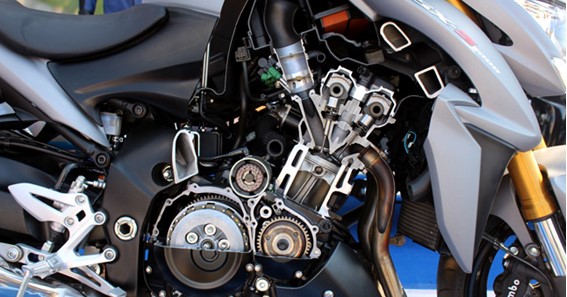Are you curious to know what is ECU in bike? You have come to the right place as I am going to tell you everything about ECU in bike in a very simple explanation. Without further discussion let’s begin to know what is ECU in bike?
Modern motorcycles have evolved to become technologically advanced machines, integrating various electronic components to enhance performance, safety, and efficiency. One crucial component that plays a pivotal role in controlling the engine’s operations is the Electronic Control Unit (ECU). In this blog post, we will delve into the concept of the ECU in bikes, its functions, and its significance in optimizing the overall riding experience.
What Is ECU In Bike?
The Electronic Control Unit (ECU) in bikes, also referred to as the Engine Control Unit, is a small computerized device responsible for managing and regulating the engine’s operations. It acts as the brain of the motorcycle, monitoring various parameters and making real-time adjustments to optimize performance, fuel efficiency, and emissions.
Functions Of The ECU:
- Fuel Injection Control: One of the primary functions of the ECU in bikes is to control the fuel injection system. The ECU receives input from various sensors such as the throttle position sensor, air temperature sensor, and oxygen sensor, and calculates the optimal amount of fuel to be injected into the engine for efficient combustion. This precise control helps enhance fuel efficiency, power delivery, and throttle response.
- Ignition Timing Control: The ECU also manages the ignition timing, ensuring that the spark plugs ignite the air-fuel mixture at the right moment for optimal combustion. By adjusting the ignition timing based on factors like engine speed, load, and temperature, the ECU maximizes power output while minimizing engine knock and improving overall performance.
- Engine Performance Optimization: The ECU in bikes continuously analyzes various engine parameters, such as RPM, throttle position, engine load, and air-fuel mixture, to optimize the engine’s performance. It fine-tunes the engine’s operations in real-time to deliver the best possible balance between power, torque, and fuel efficiency across different riding conditions.
- Diagnostic and Error Monitoring: The ECU is equipped with diagnostic capabilities that allow it to monitor the bike’s systems and detect any errors or malfunctions. It can store error codes and provide valuable diagnostic information to mechanics or technicians, simplifying the troubleshooting and repair process.
- Safety and Rider Aids: Advanced ECUs in modern bikes incorporate safety features and rider aids. These may include traction control, anti-lock braking system (ABS), ride modes, and electronic stability control. The ECU continuously monitors various parameters and intervenes to maintain stability, prevent wheel lock-up, and enhance overall safety.
Significance Of The ECU In Bikes:
- Performance Enhancement: The ECU plays a crucial role in optimizing the engine’s performance, ensuring optimal power delivery, throttle response, and torque output. By precisely controlling fuel injection and ignition timing, the ECU helps maximize the bike’s performance potential.
- Fuel Efficiency: Through its precise control over fuel injection and engine operations, the ECU contributes to improved fuel efficiency. By delivering the right amount of fuel based on real-time conditions, the ECU helps the bike achieve optimal mileage, reducing fuel consumption and emissions.
- Diagnostic Capability: The ECU’s diagnostic capabilities enable quick and accurate detection of issues or malfunctions in the bike’s systems. This aids in efficient troubleshooting and minimizes downtime during repairs, ensuring a smoother and more reliable riding experience.
- Safety and Rider Confidence: Advanced safety features integrated into the ECU enhance rider safety and confidence. Systems such as ABS and traction control help prevent skidding, wheel lock-up, and loss of control in challenging riding conditions, thereby improving overall safety.
Conclusion:
The Electronic Control Unit (ECU) in bikes serves as the intelligent control center, managing and optimizing the engine’s operations for enhanced performance, fuel efficiency, and safety. With its ability to control fuel injection, ignition timing, and various rider aids, the ECU ensures a seamless and enjoyable riding experience. As motorcycles continue to embrace advanced technologies, the ECU remains a vital component, continually evolving to meet the demands of modern riders and their ever-changing riding preferences.
FAQ
Can A Bike Run Without A ECU?
If the ECU fails, the bike will not start and you might be left stranded.
What Causes ECU Failure?
Causes of a defective engine control unit
One of the main causes is a short circuit in the wiring or in components, which can cause them to burn out. This short circuit is often caused by external influences, such as the wrong start of the car.
What Happens If My ECU Is Bad?
Your Car Won’t Start
Your engine could cut while you’re driving, as well, if the ECU malfunctions. Once you’ve coasted to a stop, you won’t be able to get your automobile started again. It’s a good idea to get your engine control module tested at the first sign of trouble.
Do All Bikes Have ECU?
Tasks of Engine Control Unit – ECU
In the regular motorcycles like low capacity or low performance commuter or in air cooled motorcycles there is no ECU or ECM.
I Have Covered All The Following Queries And Topics In The Above Article
What Is ECU In Bike Price
What Is ECU In Bike Pdf
What Is ECU In Bike Honda
ECU In Bikes Price
Bike ECU Price In India
Ecm In Bike Price
ECU Bikes In India
ECU Full Form In Bike
What Is ECU In Bike
Does ECU make bike faster
What is an ECU in a car?

